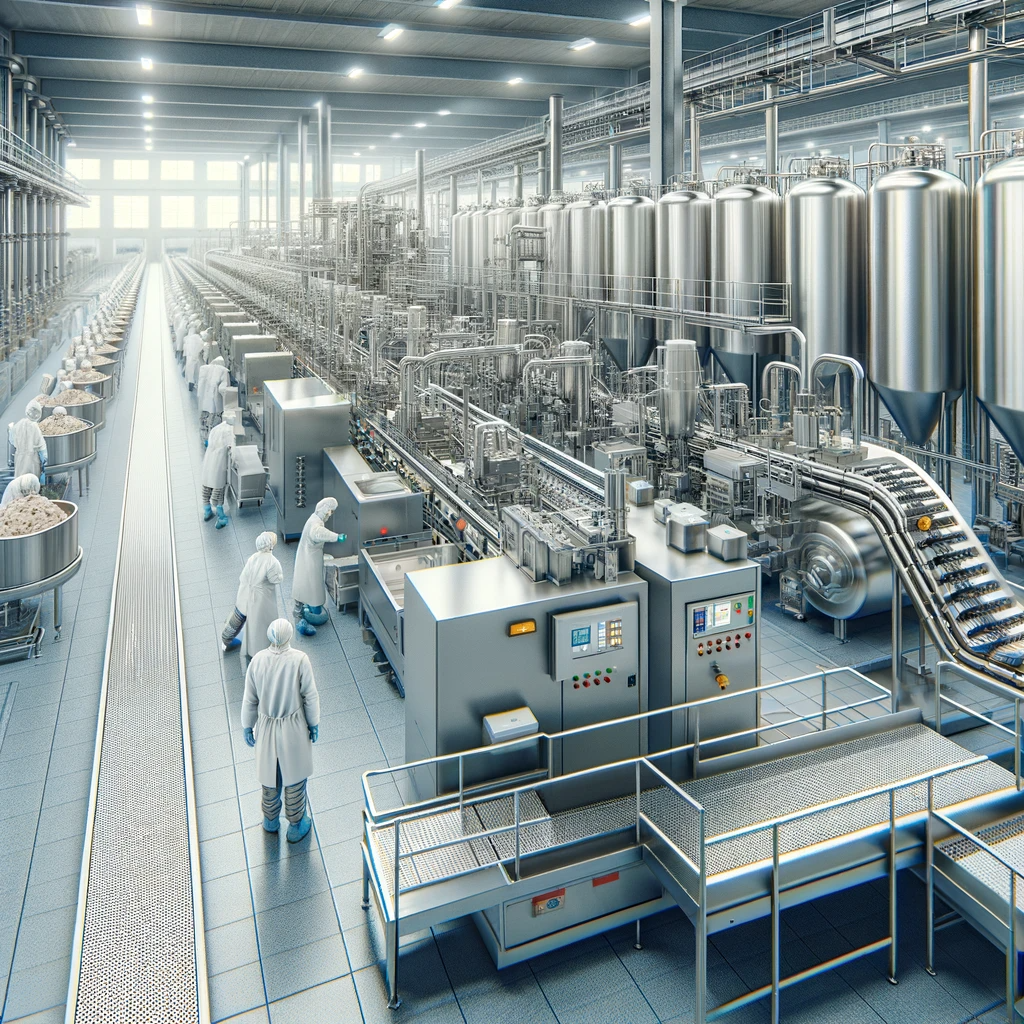
How Ice Cream is made in a factory
Share
How Ice Cream is Made in a Factory: A Deep Dive into Industrial Ice Cream Production
The process of making ice cream in a factory is a fascinating blend of culinary art, science, and technology. This comprehensive exploration will walk you through the stages of industrial ice cream production, from the initial ingredient selection to the final packaging.
1. Introduction
Ice cream, a beloved treat enjoyed globally, is produced on a large scale in factories with precision and care. The manufacturing process combines traditional methods with modern technology to meet high standards of quality, consistency, and flavor.
2. Ingredient Assembly
The journey begins with the collection of raw ingredients. The primary components of ice cream include dairy (milk and cream), sweeteners (like sugar or corn syrup), and flavorings (from classic vanilla to exotic fruits). Factories source these ingredients in bulk, emphasizing quality and sustainability.
3. The Role of Emulsifiers and Stabilizers
To ensure a smooth, creamy texture, emulsifiers like lecithin are added. They help in blending water and fat seamlessly. Stabilizers, such as guar gum or carrageenan, are also crucial. They prevent the formation of large ice crystals and contribute to a consistent texture.
4. Pasteurization for Safety and Flavor
Pasteurization is a critical step in industrial ice cream making. The mixture of ingredients is heated to a specific temperature to eliminate harmful bacteria and enzymes. This step also enhances the flavor and texture of the ice cream.
5. Homogenization: A Key to Creaminess
Following pasteurization, the mixture is homogenized. This process involves breaking down fat molecules so they evenly distribute throughout the mix, preventing separation and ensuring a uniform creamy texture.
6. Aging: Developing the Body and Texture
After homogenization, the mixture is allowed to age, usually at cold temperatures for several hours. Aging allows the fats and proteins to stabilize, which is essential for developing the body and texture of the ice cream.
7. Adding Flavor and Color
The next phase is flavoring. Depending on the desired product, natural or artificial flavors and colors are added. This stage is where the mixture transforms into recognizable ice cream flavors.
8. The Freezing Process
The heart of ice cream making lies in the freezing process. The flavored mixture is rapidly frozen while being agitated to incorporate air. This process, known as overrun, is crucial for the light, soft texture of the ice cream. Commercial freezers can achieve the perfect balance between temperature, agitation, and time.
9. Inclusion of Mix-Ins
For varieties containing nuts, fruits, chocolate chips, or swirls of caramel or fudge, these inclusions are added during or just after the freezing process. Precise timing and distribution methods are used to ensure these components are evenly dispersed.
10. Hardening: Setting the Ice Cream
Post-freezing, the ice cream is not yet firm enough for packaging. It's transferred to a hardening room where temperatures are well below freezing. This step solidifies the ice cream and stabilizes its structure.
11. Packaging: From Factory to Freezer
Packaging is a critical stage, especially for maintaining hygiene and quality. Ice cream is packaged in various formats, from pints and quarts to large tubs, using automated machinery. The packaging is designed to protect the product from light and air and to withstand cold temperatures during storage and transportation.
12. Storage and Distribution: Maintaining Quality
Proper storage is crucial in preserving the quality of ice cream. Factories have large freezers where the packaged product is stored before distribution. The cold chain must be maintained throughout transportation to retail outlets to ensure the ice cream reaches consumers in perfect condition.
13. Quality Control: Ensuring Consistency
Throughout the manufacturing process, quality control is paramount. Samples are regularly tested for texture, flavor, and consistency. Factories adhere to strict hygiene and safety standards to ensure the product meets regulatory requirements and consumer expectations.
14. Innovation and Experimentation
Modern ice cream factories are hubs of innovation, constantly experimenting with new flavors, textures, and ingredients. This innovation caters to evolving consumer tastes and dietary needs, including the production of dairy-free and low-sugar options.
15. Environmental Considerations
With growing awareness of environmental impact, ice cream factories are adopting sustainable practices. This includes reducing waste, optimizing water and energy usage, and sourcing ingredients responsibly.
16. The Magic of Scale
One of the marvels of factory production is the ability to produce vast quantities of ice cream while maintaining consistent quality. Advanced machinery, meticulous planning, and efficient processes enable factories to meet the high demand for this beloved dessert.
17. A Symphony of Flavor and Science
The industrial production of ice cream is a testament to the intersection of culinary art, science, and technology. From the careful selection of ingredients to the intricate processes of pasteurization, homogenization, and freezing, each step is a crucial component.
